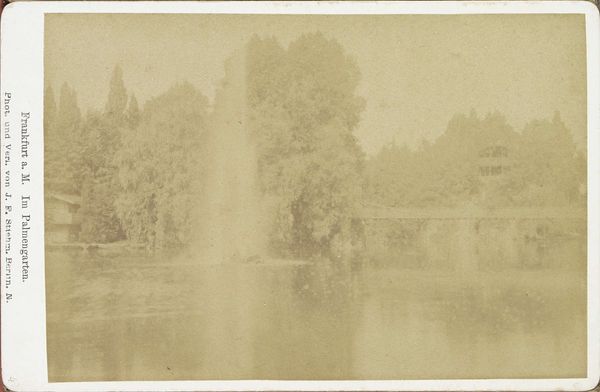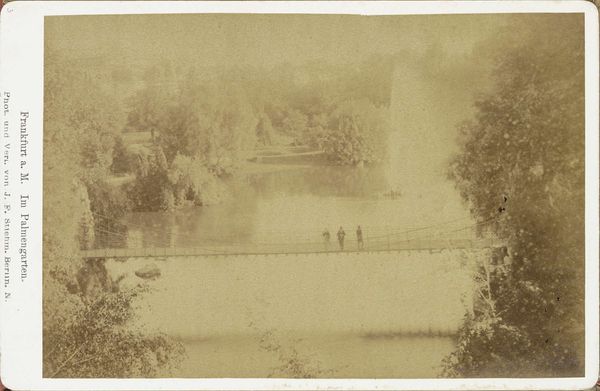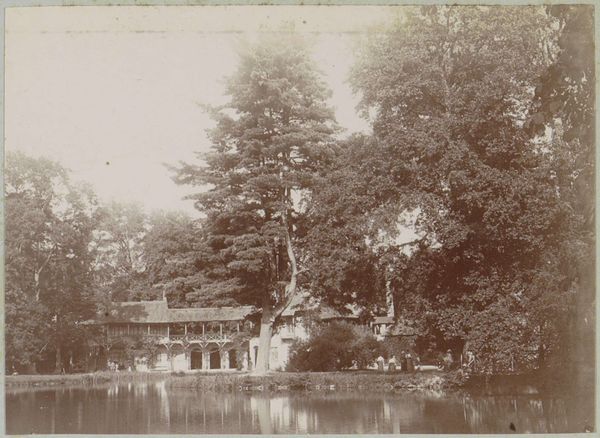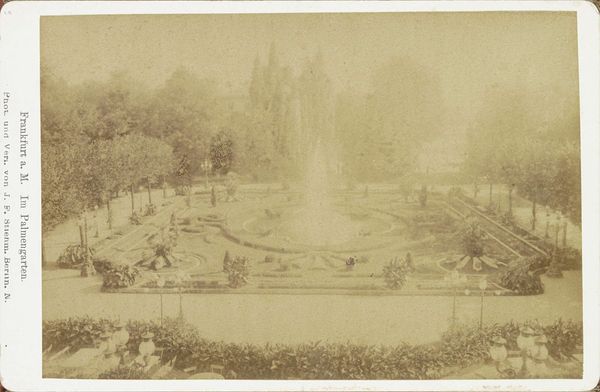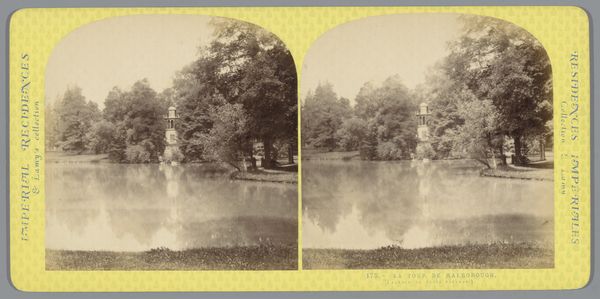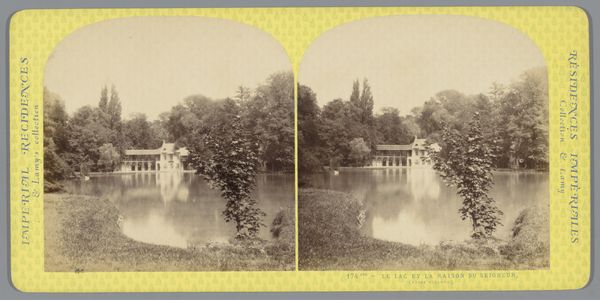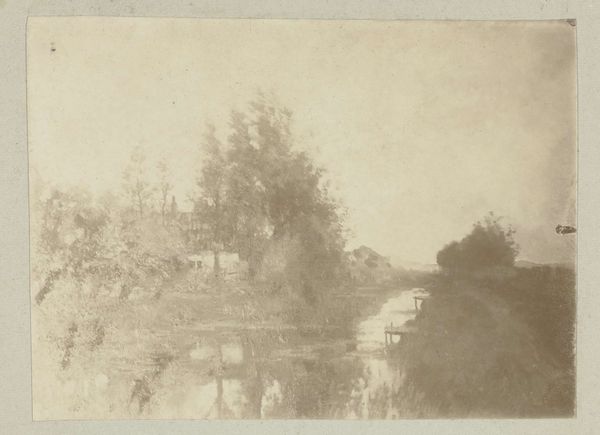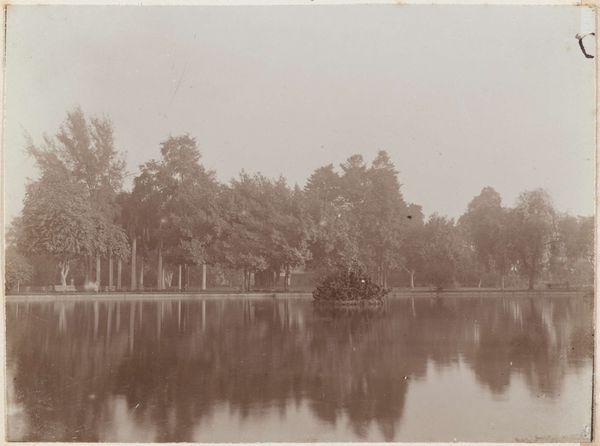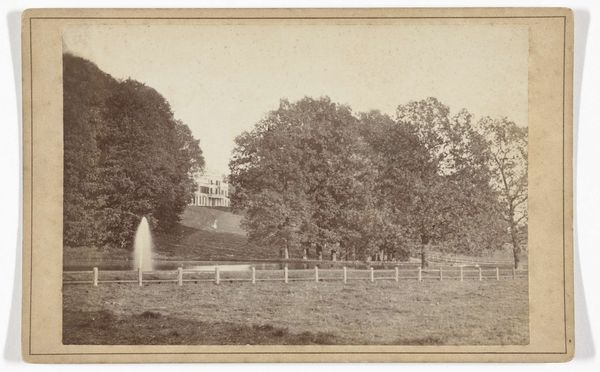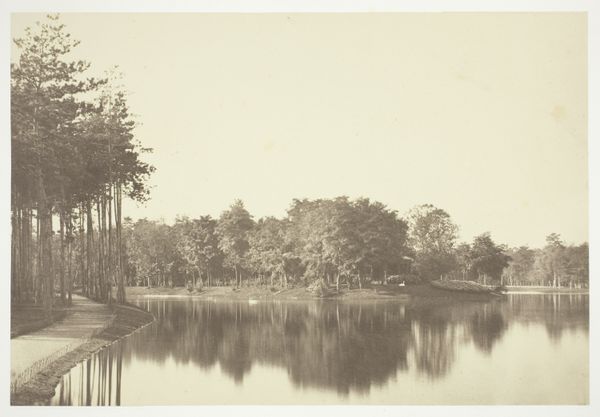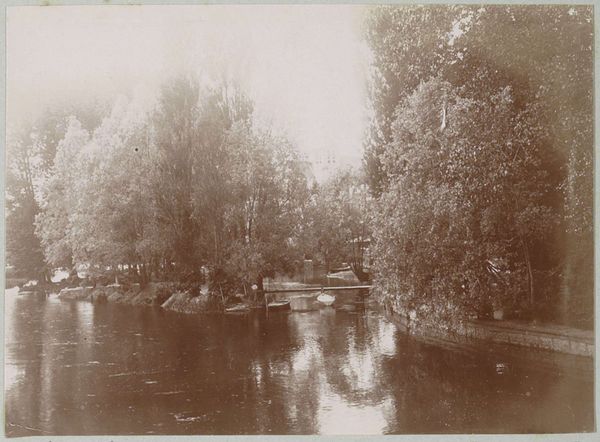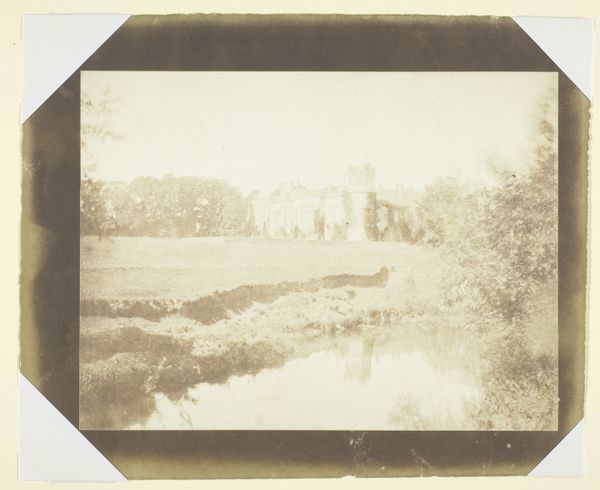
Dimensions: height 109 mm, width 168 mm
Copyright: Rijks Museum: Open Domain
Editor: This photograph, “Vijver met fontein en brug in de Palmentuin van Frankfurt,” taken by Johann Friedrich Stiehm sometime after 1871, has such a dreamlike quality. What strikes me is how the soft focus almost dematerializes the scene. How would you interpret this work? Curator: From a materialist perspective, this "dematerialization" is precisely what interests me. Stiehm, working in the era of Pictorialism, isn't simply documenting a scene. Consider the labor involved in creating the Palmentuin itself—the planned landscape, the engineered water features, the very construction of leisure for the burgeoning middle class. He then intervenes through the photographic process, manipulating the materials of photography—lenses, exposure, printing techniques—to obscure this underlying labor. Editor: So, you're saying the hazy effect is intentional, meant to hide the work behind creating this scene? Curator: Exactly! It softens the harsh realities of industrializing Frankfurt, offering a romantic escape. Think about the production and consumption of such imagery too. Photographs like these became commodities, reproduced and distributed widely. The ease with which they could be circulated further obscures the material conditions that made both the garden and the photograph possible. Editor: That's a completely different way of seeing it. I was caught up in the aesthetic, but now I see a whole other layer related to labor and consumption. Curator: Indeed. What appear as aesthetic choices are, in effect, strategies that have cultural context and purpose. What have you learned after exploring this photograph? Editor: How important it is to look beyond the surface appeal and question how it came to be, what it hides, and what purpose it serves. Thanks! Curator: And for me, it highlights how photographic processes influence subject construction and cultural exchange, and remind us to focus on all the parts of making and material. Thank you.
Comments
No comments
Be the first to comment and join the conversation on the ultimate creative platform.
